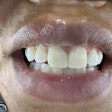A team of chemical engineers at the Massachusetts Institute of Technology (MIT) has developed a coating for hip implants that could help them better adhere to the patient's bone, preventing premature failure Advanced Materials.
The coating, which induces the body's own cells to produce bone that fixes the implant in place, could also be used to help heal fractures and improve dental implants, according to senior author Paula Hammond, the David H. Koch Professor in Engineering at MIT, and lead author Nisarg Shah, a graduate student in Hammond's lab (AM, March 15, 2012, Vol. 24:11, pp. 1445-1450).
The coating consists of a very thin film (100 nanometers to 1 micron) composed of layers of materials that help promote rapid bone growth, the researchers explained in a university press release. One of the materials, hydroxyapatite, is a natural component of bone made of calcium and phosphate. This material attracts mesenchymal stem cells from the bone marrow and provides an interface for the formation of new bone. The other layer releases a growth factor that stimulates mesenchymal stem cells to transform into bone-producing cells called osteoblasts.
Once the osteoblasts form, they start producing new bone to fill in the spaces surrounding the implant, securing it to the existing bone and eliminating the need for bone cement. It takes at least two or three weeks for the bone to fill in and stabilize the implant, according to the researchers.
The coating could improve dental implants by reducing implant procedures to a one-step process, they noted.



















